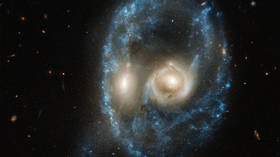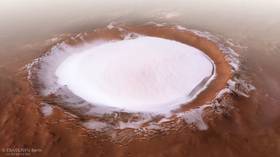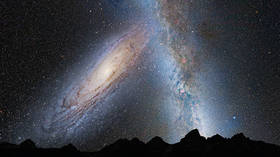Hubble, bubble, toil and trouble: NASA telescope catches spooky face staring at us from the void

The team behind NASA’s Hubble Space Telescope has released a cosmically terrifying image of what appears to be a celestial spook looking right at us from deep in the universe.
Thankfully, it is not Cthulhu’s cousin or anything quite so sinister but is instead two galaxies merging in a system called called Arp-Madore 2026-424, 704 million light-years away.
In celebration of #Halloween, Hubble has captured the collision of two galaxies of equal size that appears to resemble a ghostly face.https://t.co/rNI9jHN7W1Credit: @NASA / @ESA , J. Dalcanton, B.F. Williams, and M. Durbin (University of Washington) pic.twitter.com/5CviTTaGAI
— HUBBLE (@HUBBLE_space) October 28, 2019
The ‘head’ is a result of the gravitational shock wave that pushes material outwards from the two merging galaxies while the bright ‘eyes’ are the centers of the galaxies themselves.
“The crash has pulled and stretched the galaxies’ discs of gas, dust, and stars outward, forming the ring of intense star formation that shapes the ‘nose’ and ‘face’ features of the system,” a NASA spokesperson explained on Hubble’s official website.
Pareidolia is the tendency for humans to see faces in inanimate objects and in our environment and is often at the heart of reports about the wider universe and sightings of ‘faces’ and possible ‘aliens.’
In this case, however, astronomers believe this spooky celestial spectre will linger, ever-watchful, in our telescopes for several hundred million years before the ring dissipates leaving only the singular bright mass of the combined galaxies.
However, because of the amount of time it takes for the light to reach us on Earth, we are actually witnessing how the behemoth looked over 700 million years ago, so the formation has likely long lost its shape.
Also on rt.com ‘Face’ spotted on Mars as NASA releases bizarre photoLike this story? Share it with a friend!














